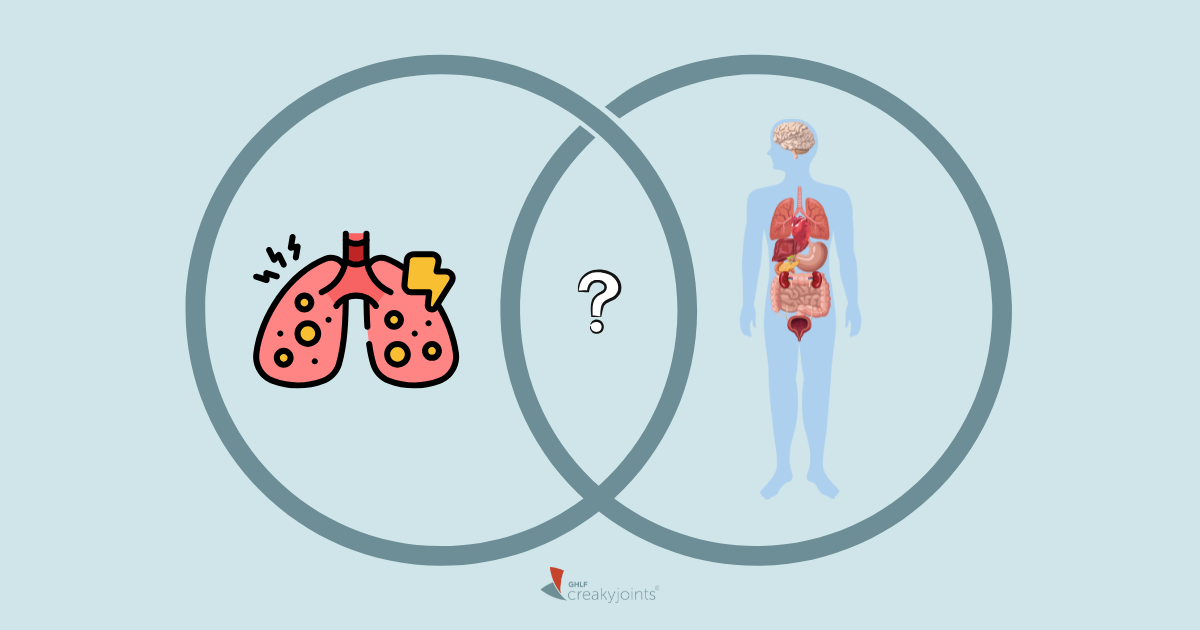Learn more about our FREE COVID-19 Patient Support Program for chronic illness patients and their loved ones.
This has been reviewed and updated as of May 8, 2020.
While many employers have adapted to the coronavirus pandemic and put in place work from home policies, many workers are still deemed “essential” and being asked to show up to work as usual, especially as states begin to reopen their economies across much of the U.S. This is especially challenging for people with chronic illnesses who may be more vulnerable to coronavirus complications.
The Global Healthy Living Foundation and its CreakyJoints patient community has been fielding many questions about this from patients. Generally, people want to know:
What options do high-risk or immunocompromised patients have if they still *have* to go into work?
The answer can vary by state. Localities are working to provide more opportunities to call in sick and work from home. Given the current pandemic, states and the federal government are enacting new pieces of legislation and creating a rapidly changing landscape.
We will update this resource as needed to keep you informed.
Please reach out to your HR department or visit your state’s Department of Labor website for further resources.
Federal Paid Sick Leave
In terms of having a right to work from home, there is no federal law that gives employees the right to work remotely, or the right to ask to work remotely. However, the federal government is working on provisions for expanding employee benefits. The Families First Coronavirus Response Act, which was recently signed into law, has numerous such protections.
Here are the basics:
Businesses with Under 500 Employees
The Act requires all public employers and private employers with fewer than 500 workers to provide paid sick leave to employees affected by the coronavirus (exceptions for health care providers, emergency responders, and certain small businesses are allowed).
Businesses with More than 500 Employees
Businesses with more than 500 workers are exempt, but in some cases people could be covered under state legislation (more on this below).
Businesses with Under 50 Employees
Businesses with under 50 employees could be exempt from the tax, but these businesses would have to “prove” their hardship.
Federal Sick Leave Benefits
Under the law, full-time workers can get up to 80 hours of paid sick leave, while part-time workers can get sick leave for the average number of hours they work over a two-week period.
These federal emergency paid leave benefits are already implemented but more are on the way.
Immunocompromised individuals, if eligible, will be able to use these protections to stay home and reduce their risk of exposure while also ensuring up to three months of paid leave benefit.
Specifically, Section 5102 of the Act covers workers who have “been advised by a health care provider to self-quarantine due to concerns related to COVID–19.”
Who Qualifies to Take Paid Sick Leave?
This is covered in the Definitions of Section 601 of the Families First Coronavirus Response Act. This section defines an “emergency leave day” as a day in which an individual is unable to work due to one of four qualifying reasons related to COVID-19:
- The worker has a current diagnosis of COVID-19.
- The worker is quarantined (including self-imposed quarantine), at the instruction of a health care provider, employer, or government official, to prevent the spread of COVID-19.
- The worker is caring for another person who has COVID-19 or who is under a quarantine related to COVID-19.
- The worker is caring for a child or other individual who is unable to care for themselves due to the COVID-19-related closing of their school, childcare facility, or other care program.
What Is Required of Employers by the Families First Act?
- Requires all employers to allow employees to gradually accrue seven days of paid sick leave and to provide an additional 14 days available immediately in the event of any public health emergency, including the current coronavirus crisis;
- Requires all employers to provide an additional 14 days of paid sick leave, available immediately at the beginning of a public health emergency, including the current coronavirus crisis;
- Ensures paid sick leave covers days when your child’s school is closed due to a public health emergency, when your employer is closed due to public health emergency, or if you or a family member is quarantined or isolated due to a public health emergency;
- Reimburses small businesses — defined as businesses with 50 or fewer employees — for the costs of providing the 14 days of additional paid sick leave used by employees during a public health emergency;
- Enables construction employees to receive sick pay based on hours they work for multiple contractors; and
- Makes the bill effective immediately so that employees in areas covered under a qualifying Public Health Emergency, upon the date of enactment, can take 14 days of paid sick leave in order to address COVID-19.
How Much Will Workers Be Compensated?
Workers who are sick or quarantined get full pay while on coronavirus leave, up to $511 per day ($5,110 in total).
Workers caring for another person or on leave because of an HHS-specified condition get two-thirds of their normal pay while on leave, up to $200 per day ($2,000 in total).
After this two-week period (10 days), workers receive two-thirds of their regular salary while on coronavirus-related FMLA leave, but compensation is capped at $200 per day and $10,000 in total.
State Paid Sick Leave
Twelve states and Washington D.C. have enacted laws (prior to the coronavirus pandemic) to require paid sick leave. You can read more about this from National Conference of State Legislators, but we summarized it here:
- Connecticut was the first state to require private-sector employers to provide paid sick leave to their employees, with a law enacted in 2011.
- California became the second state to enact paid sick requirements, with the passage of the Healthy Workplace, Healthy Families Act of 2014.
- Massachusetts was the third state to require paid sick leave, as voters there approved the Earned Sick Time for Employees ballot measure during the 2014 general election.
- The Oregon Legislature enacted a law during the 2015 session.
- The Vermont Legislature did so during the 2016 session.
- During the 2016 general election, voters in Arizona and Washington approved ballot measures requiring employers to provide paid sick leave.
- The Rhode Island Legislature was the only state to pass a paid sick leave law in 2017, which took effect in 2018.
- In 2018, Maryland, New Jersey, and Michigan enacted paid sick leave measures.
- Two more states, Nevada and Maine, enacted paid sick leave laws in 2019. Nevada’s paid sick leave law took effect at the start of 2020, Maine’s does not take effect until 2021.
Here is a chart the outlines how paid sick leave benefits vary by state.
| State | Covered Employers | Sick Leave Accrual |
| Arizona | Private-sector employers and local governments | One hour of sick leave for every 30 hours worked. Maximum of 40 hours per year. |
| California | Public and private employers | One hour of sick leave for every 30 hours worked. Employers may cap total paid sick leave at six days per year. |
| Connecticut | Employers with more than 50 employees | One hour of sick leave for every 40 hours worked. Maximum of 40 hours per year. |
| D.C. | Public and private employers | Employers with 100-plus employees: One hour of leave for every 30 hours worked. Maximum of seven days per year. Employers with 25-99 employees: One hour of leave for every 43 hours worked. Maximum of five days per year. Employers with 1-24 employees: One hour of leave for every 87 hours worked. Maximum of three days per year. |
| Maryland | Public and private employers with more than 15 employees | One hour of leave for every 30 hours worked. Maximum of 40 hours per year. |
| Massachusetts | Public (not federal) and private employers with 11 or more employees | One hour of sick leave for every 30 hours worked. Maximum of 40 hours per year. |
| Michigan | Public (not federal) and private employers with 50 or more employees | One hour of sick leave for every 35 hours worked. Maximum of 40 hours per year. |
| Nevada | Private employers with 50 or more employees | 0.01923 hours of sick leave for each hour worked. (Approximately one hour of leave for every 52 hours worked.) Employers can limit leave to 40 hours per year. |
| New Jersey | Public and private employers | One hour of sick leave for every 30 hours worked. Maximum of 40 hours per year. |
| Oregon | Public and private employers | Employers with 10-plus employees: One hour of sick leave for every 30 hours worked. Employers with fewer than 10 employees: One hour of unpaid leave for every 30 hours worked. |
| Rhode Island | Public and private employers with 18 or more employees in previous years’ two highest employment quarters | One hour of sick leave for every 35 hours worked. Maximum of 40 hours per year. |
| Vermont | Public and private employers (New employers exempt until one year after hiring their first employee) | One hour of sick leave for every 52 hours worked. Employers can cap leave at 40 hours per year. |
| Washington | Public and private employers | One hour of sick leave for every 40 hours worked. Employees must be allowed to carry over up to 40 hours of unused sick leave per year. |
Get Free Coronavirus Support for Chronic Illness Patients
Join the Global Healthy Living Foundation’s free COVID-19 Support Program for chronic illness patients and their families. We will be providing updated information, community support, and other resources tailored specifically to your health and safety. Join now.
H.R.6201 Families First Coronavirus Response Act. Congress.gov. https://www.congress.gov/bill/116th-congress/house-bill/6201/text.
Paid Sick Leave. National Conference of State Legislatures. https://www.ncsl.org/research/labor-and-employment/paid-sick-leave.aspx.






